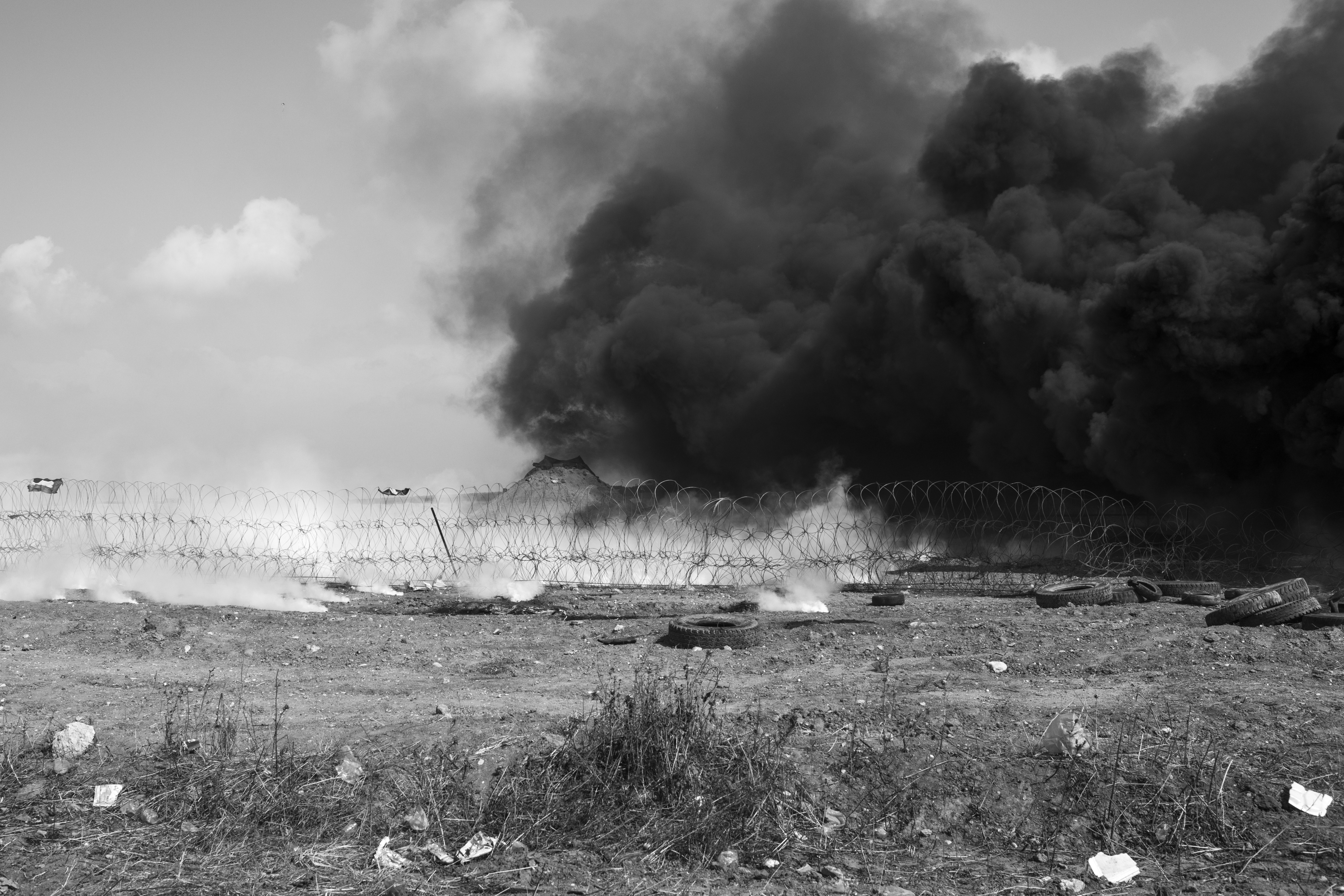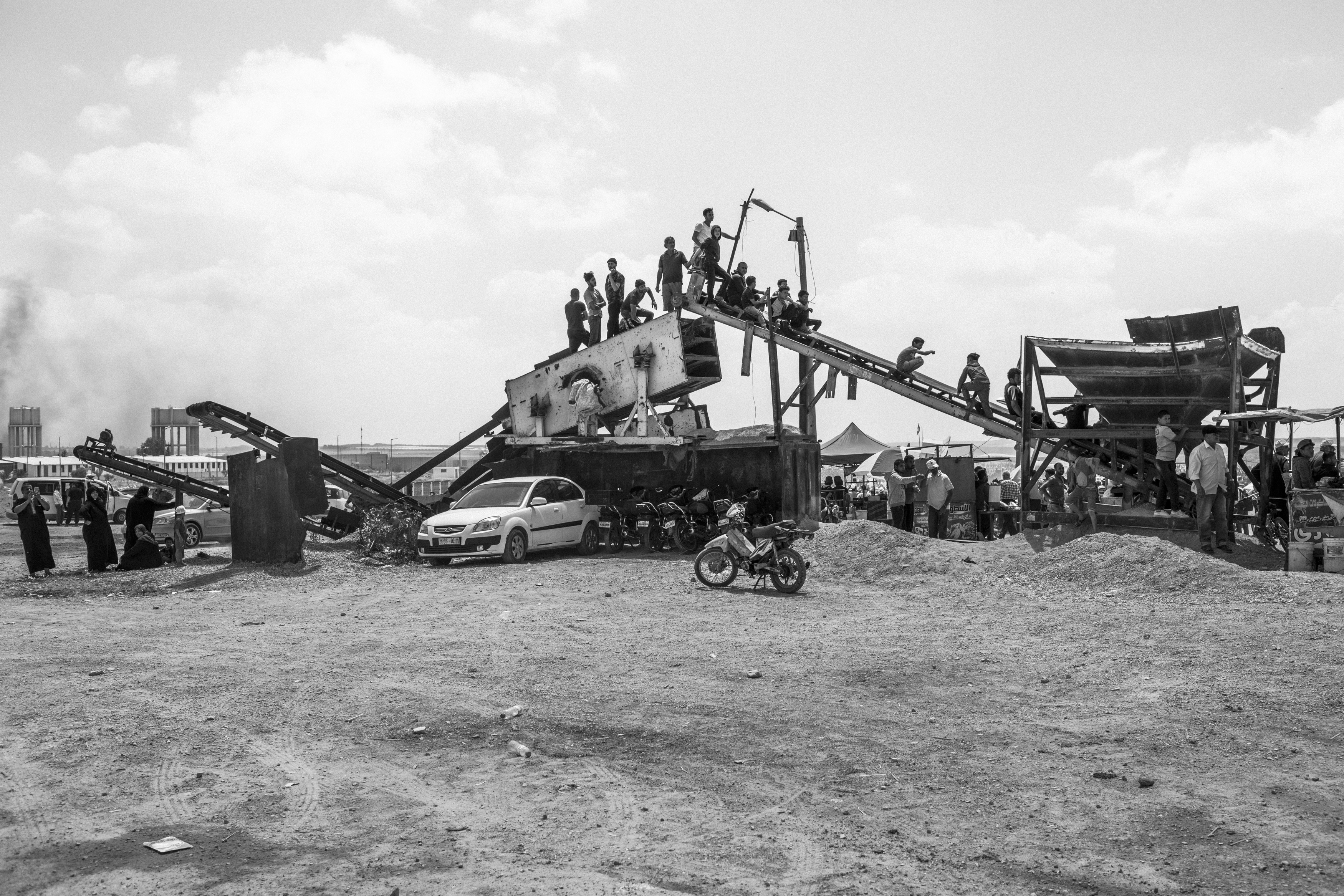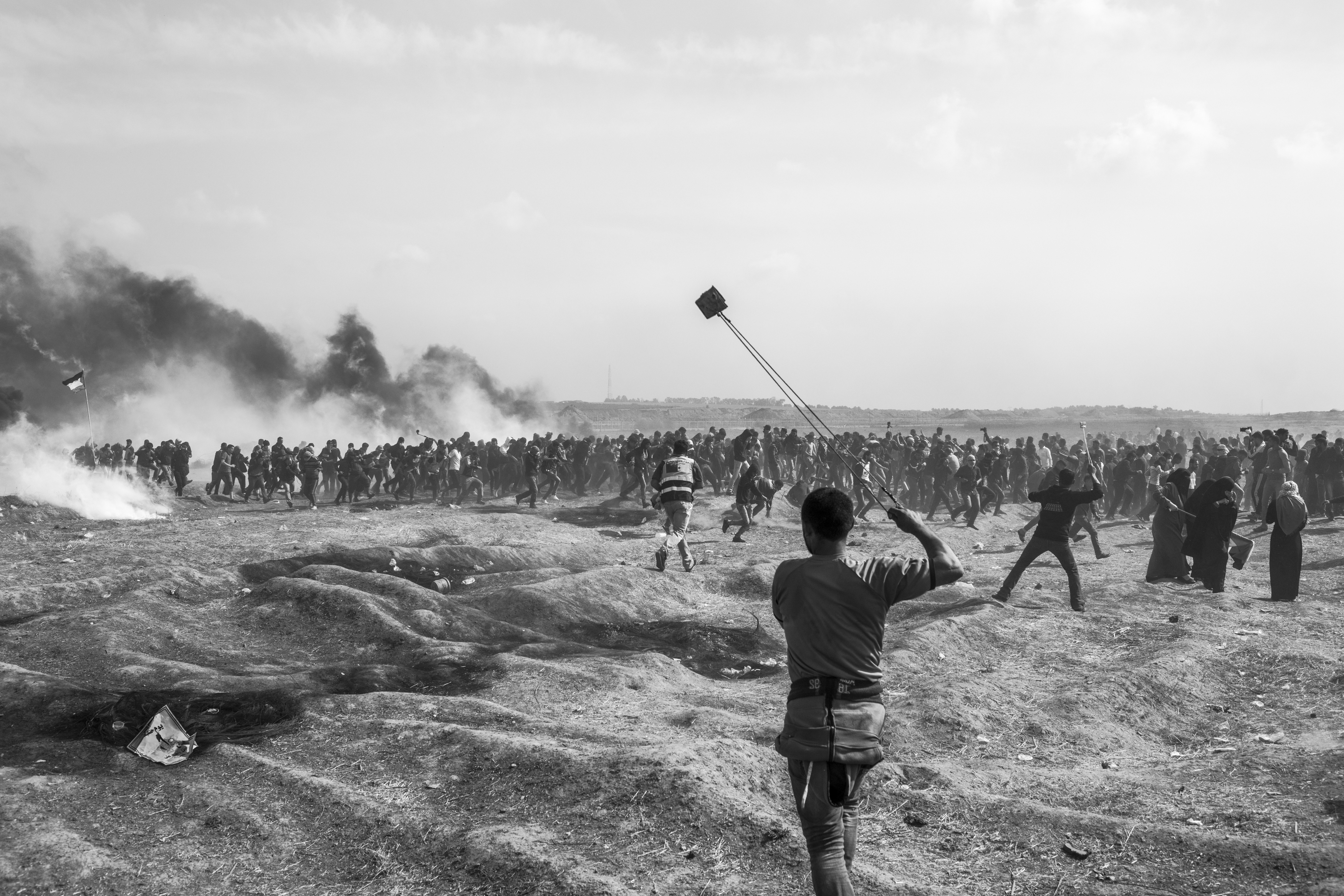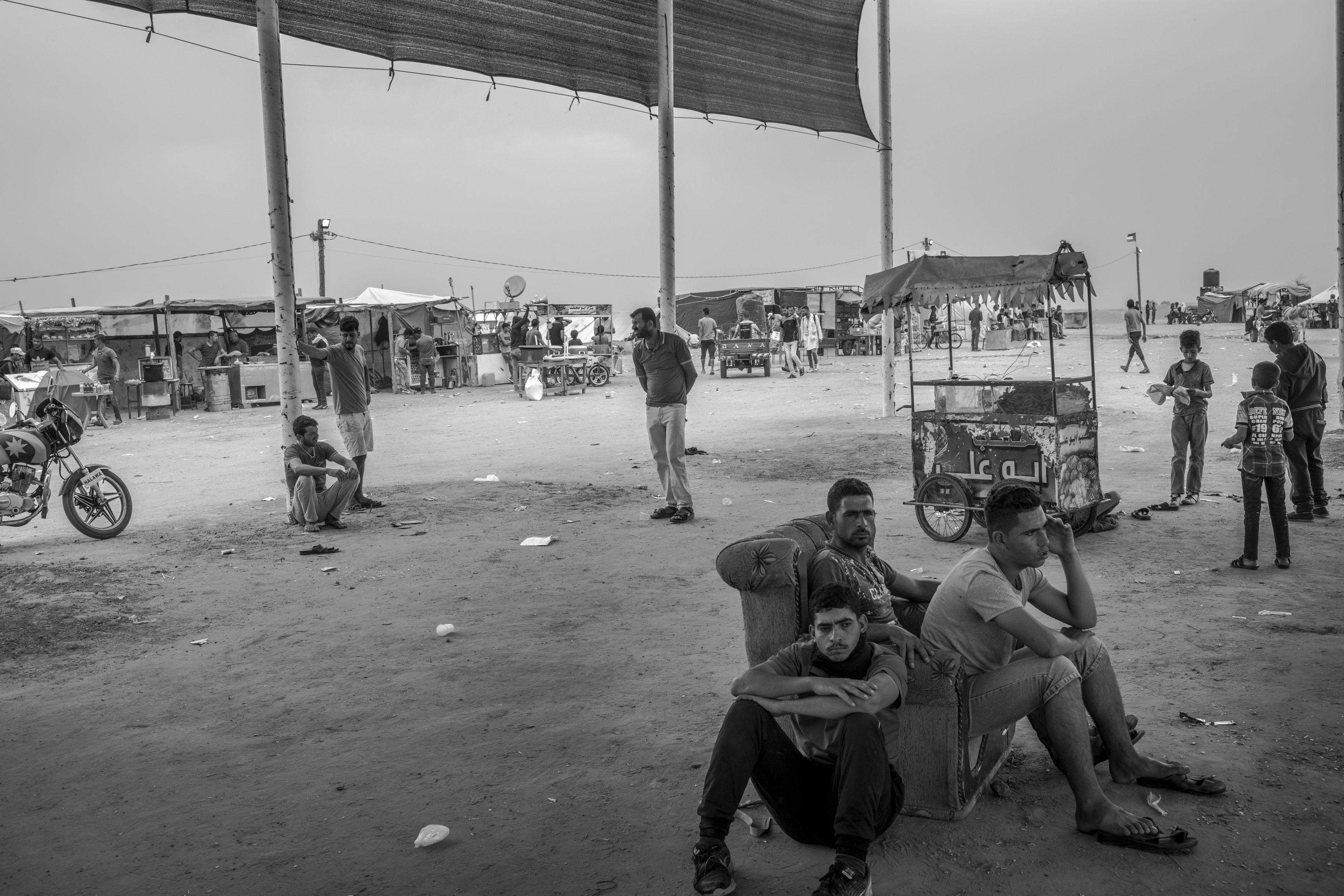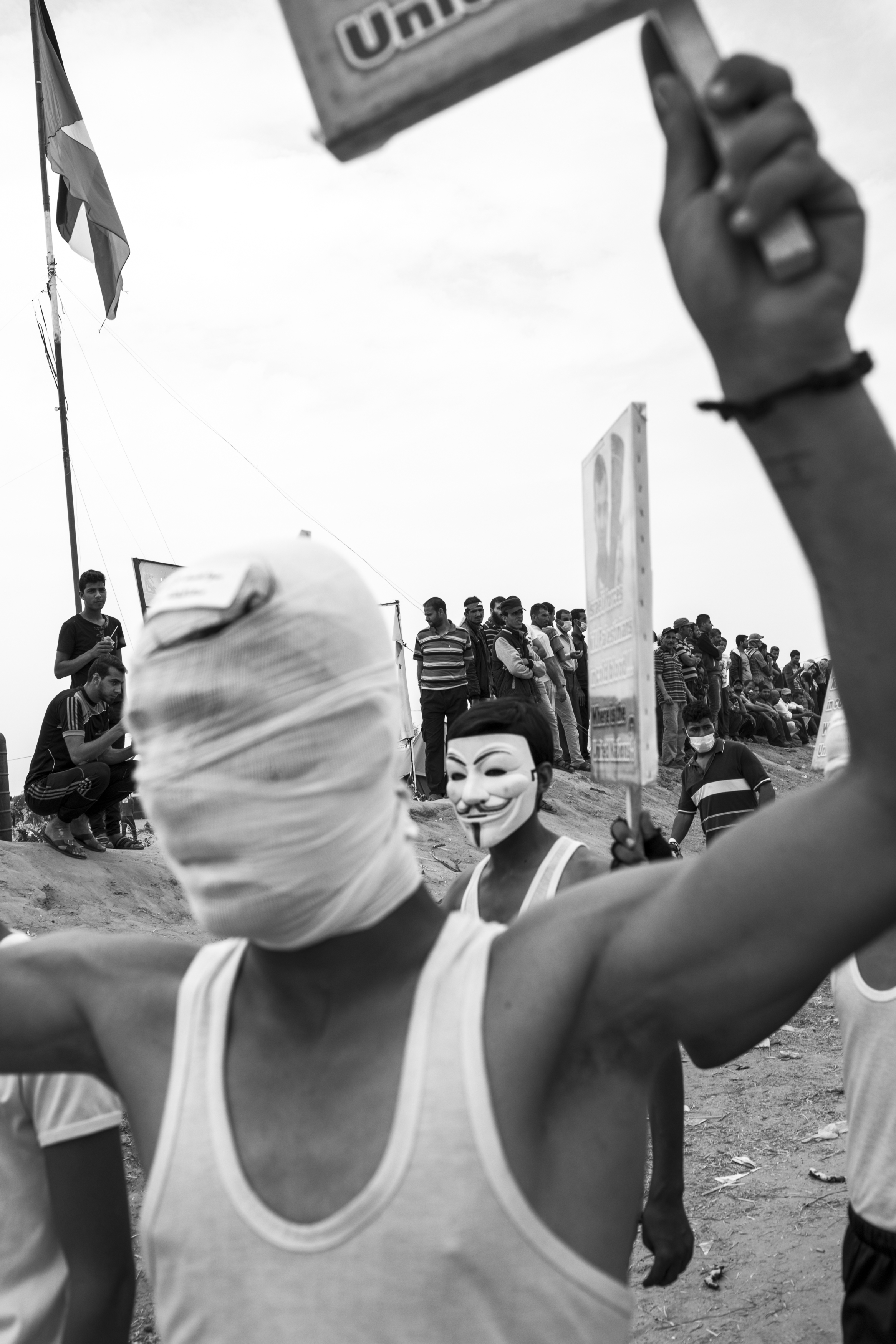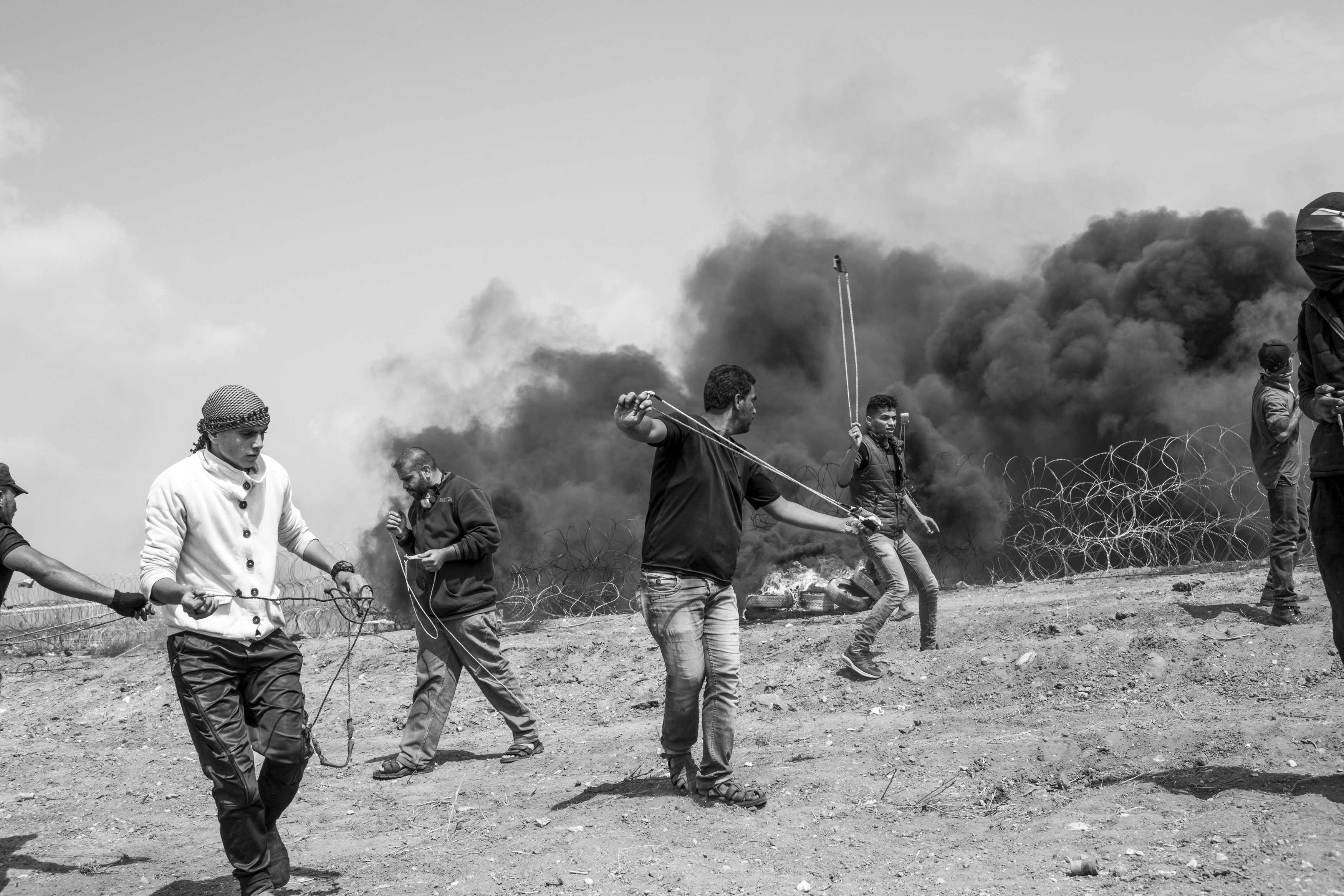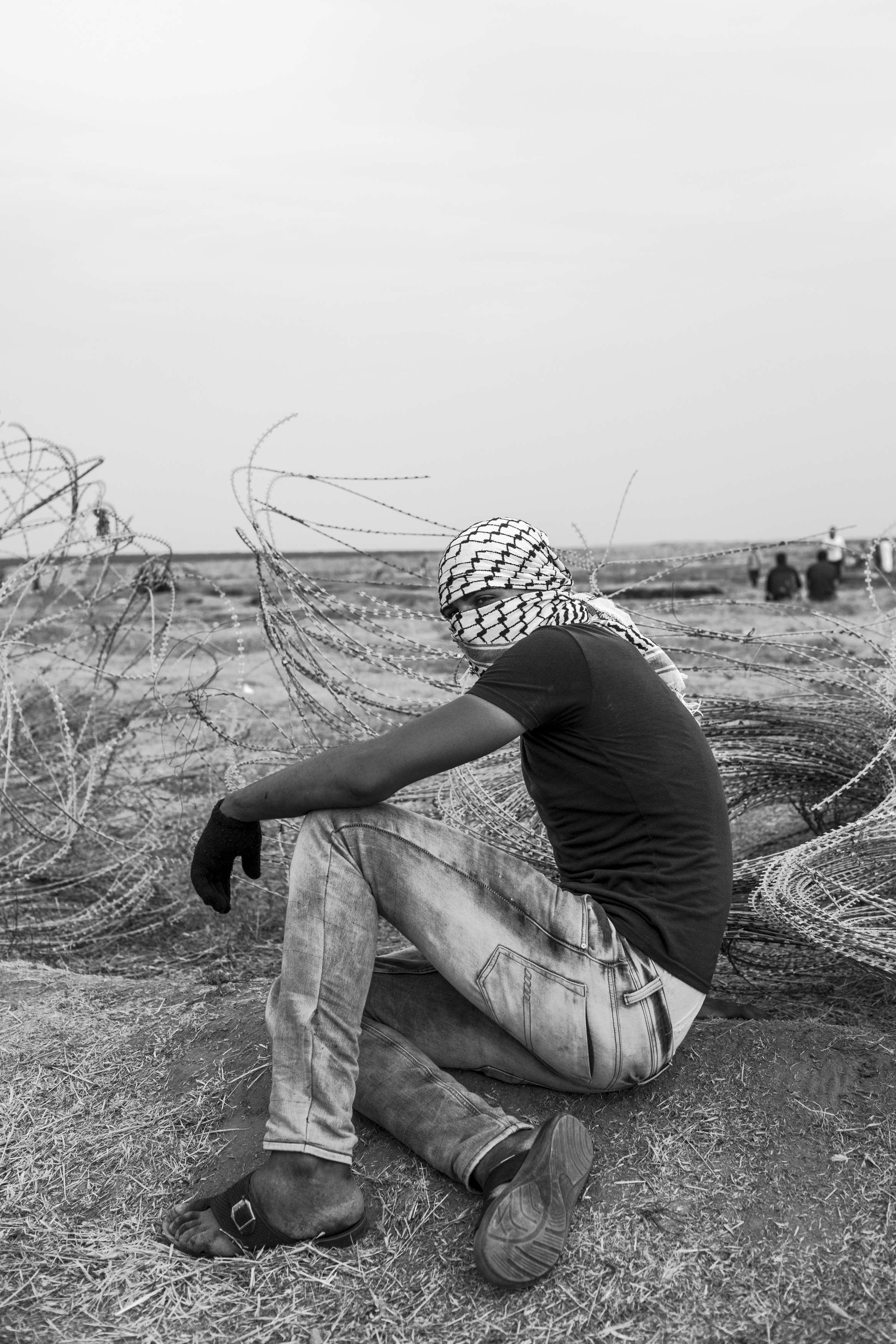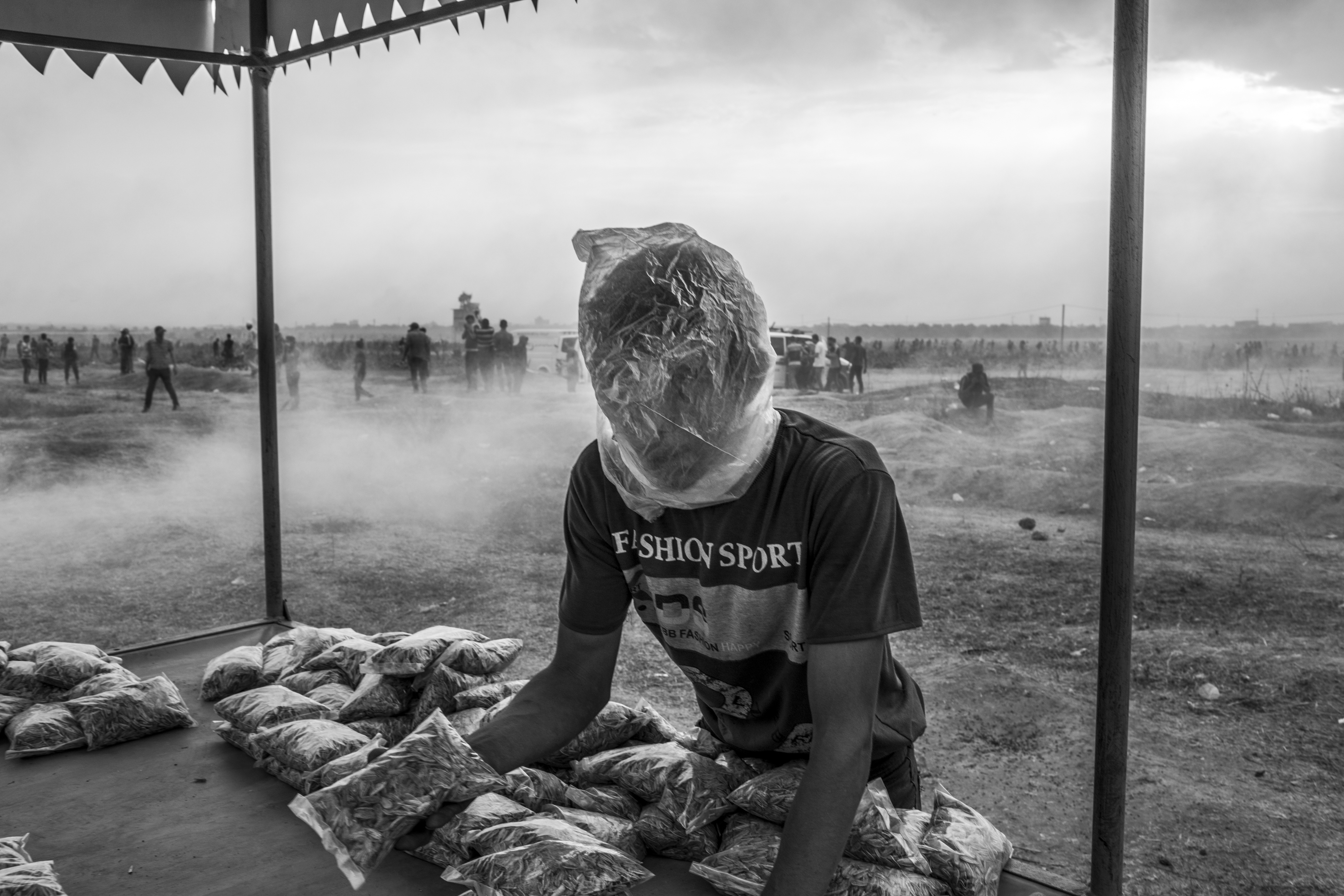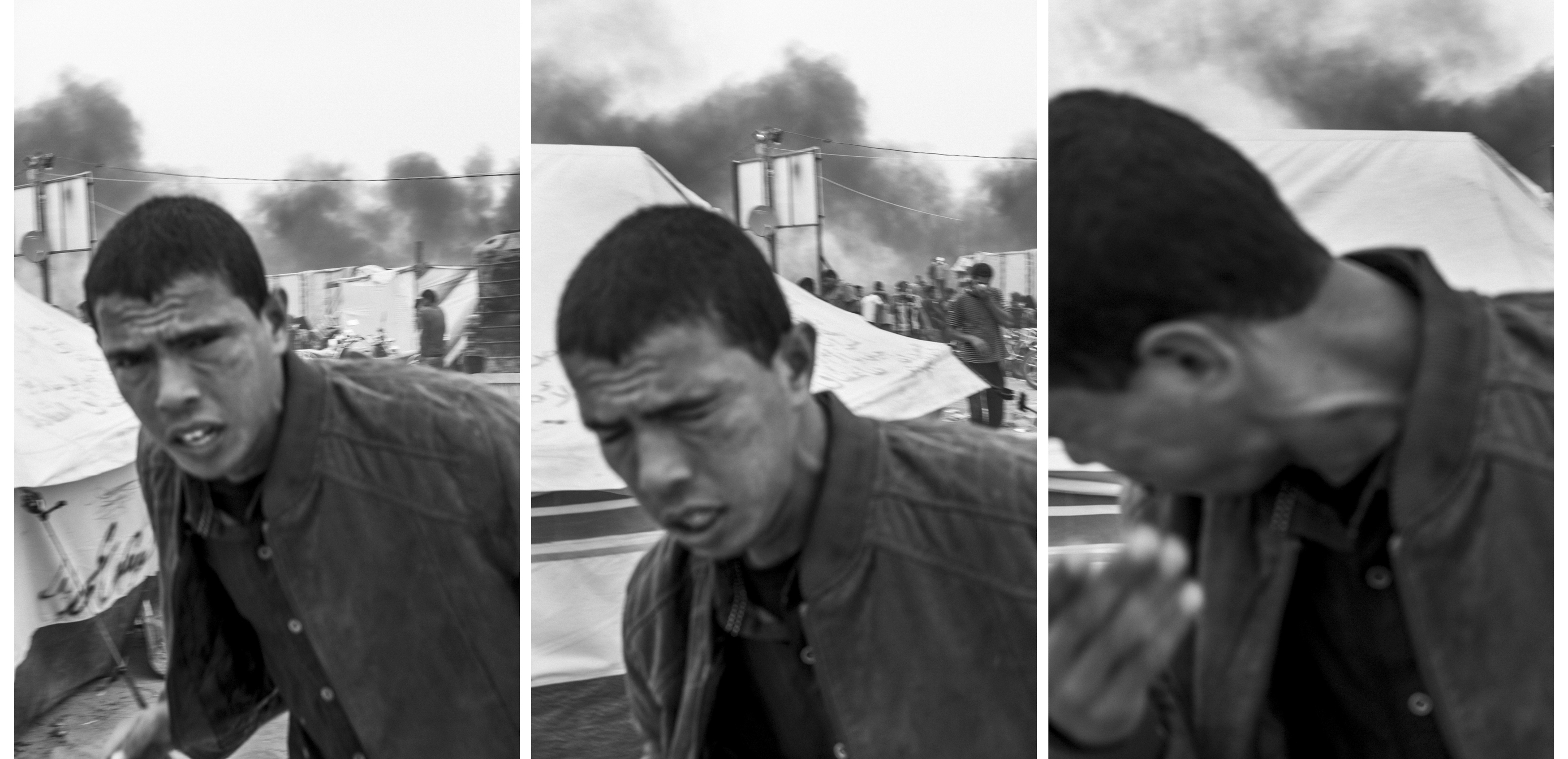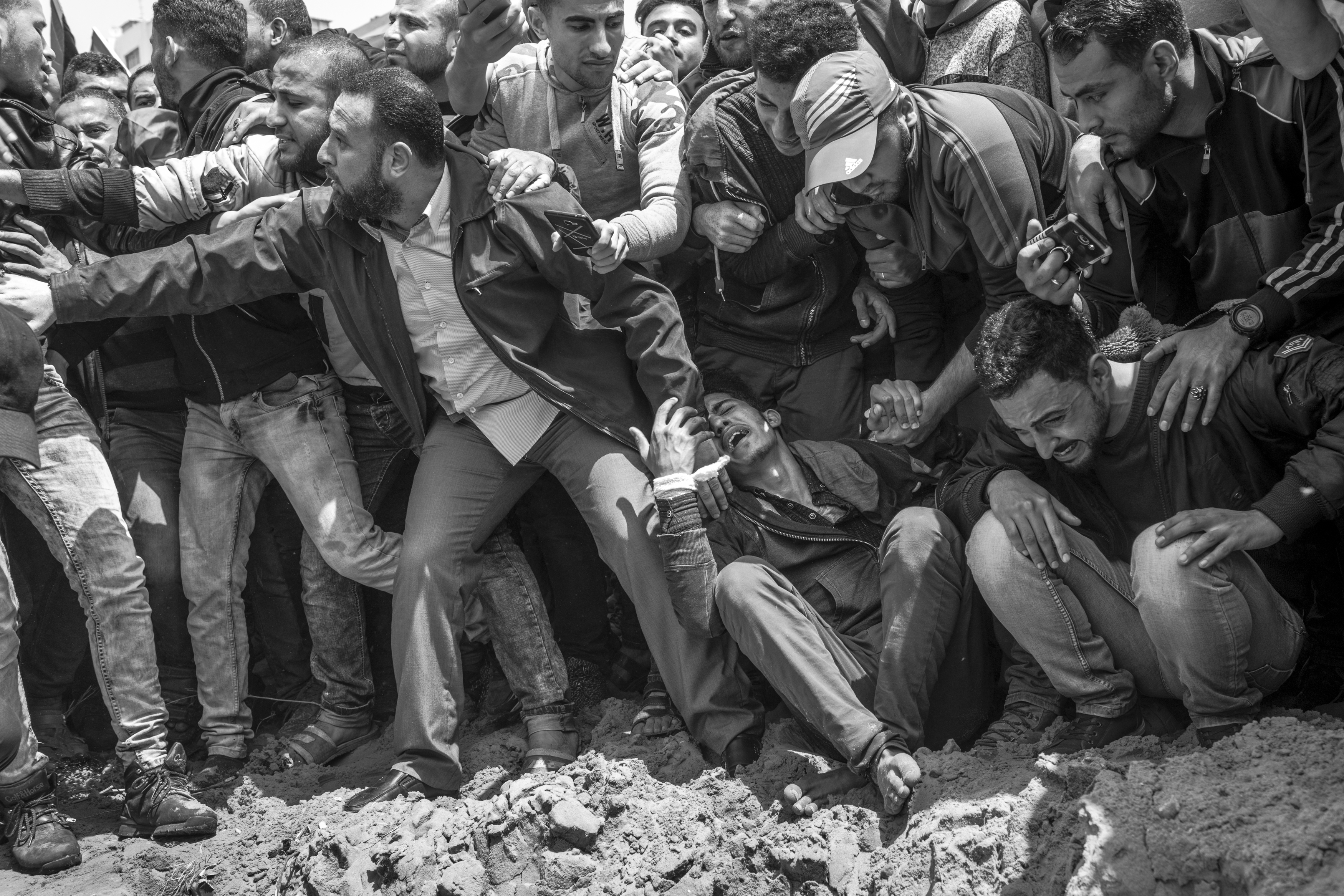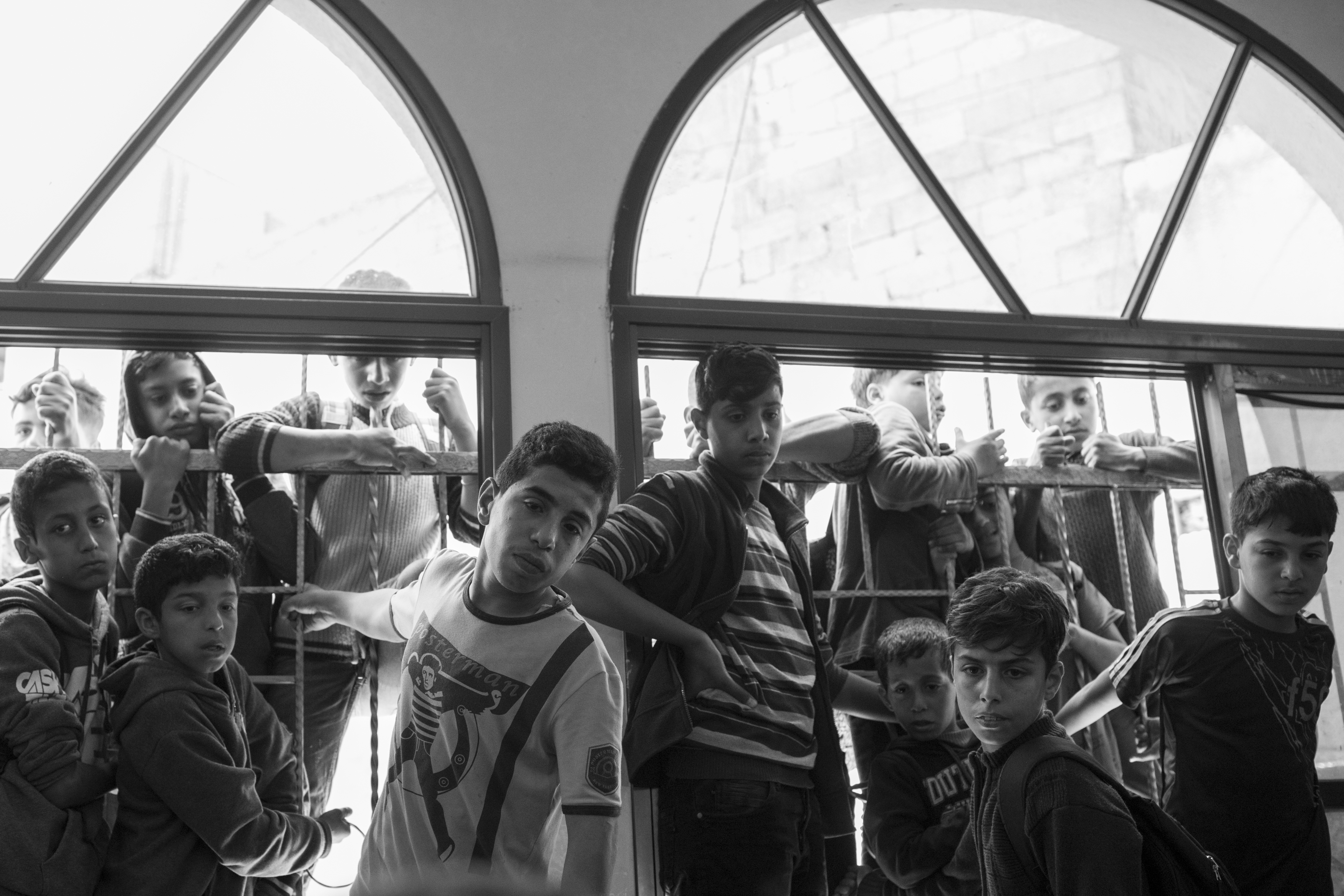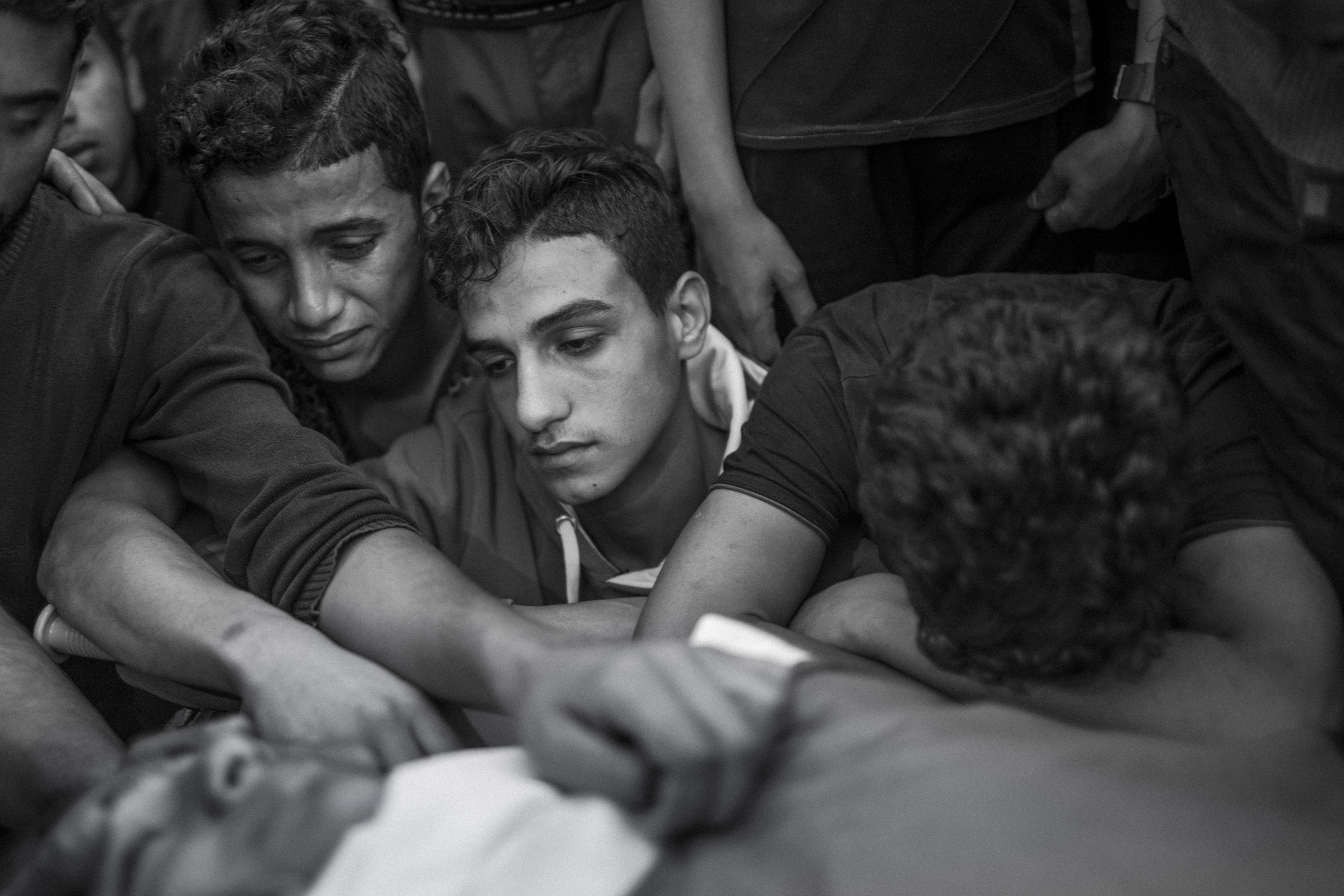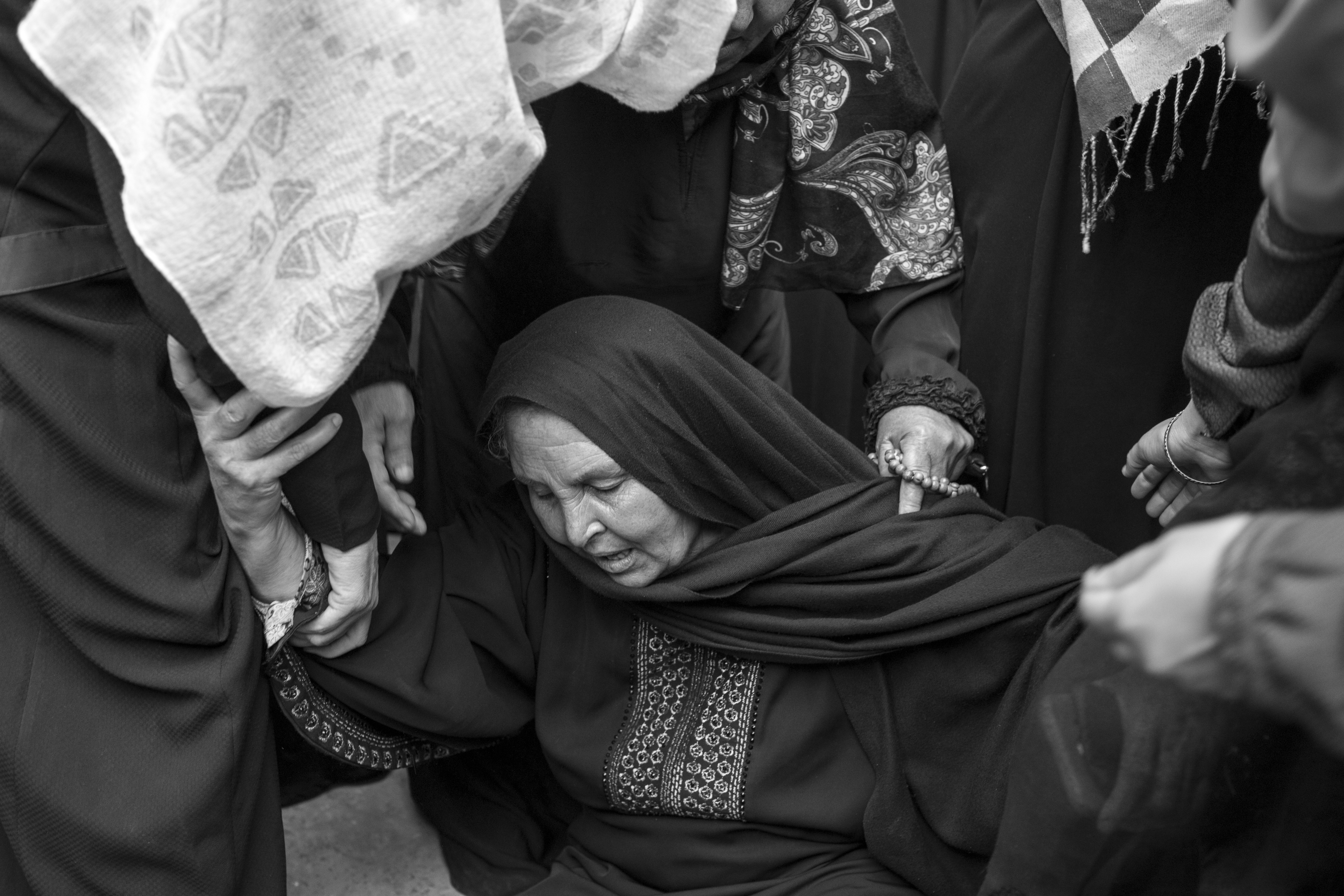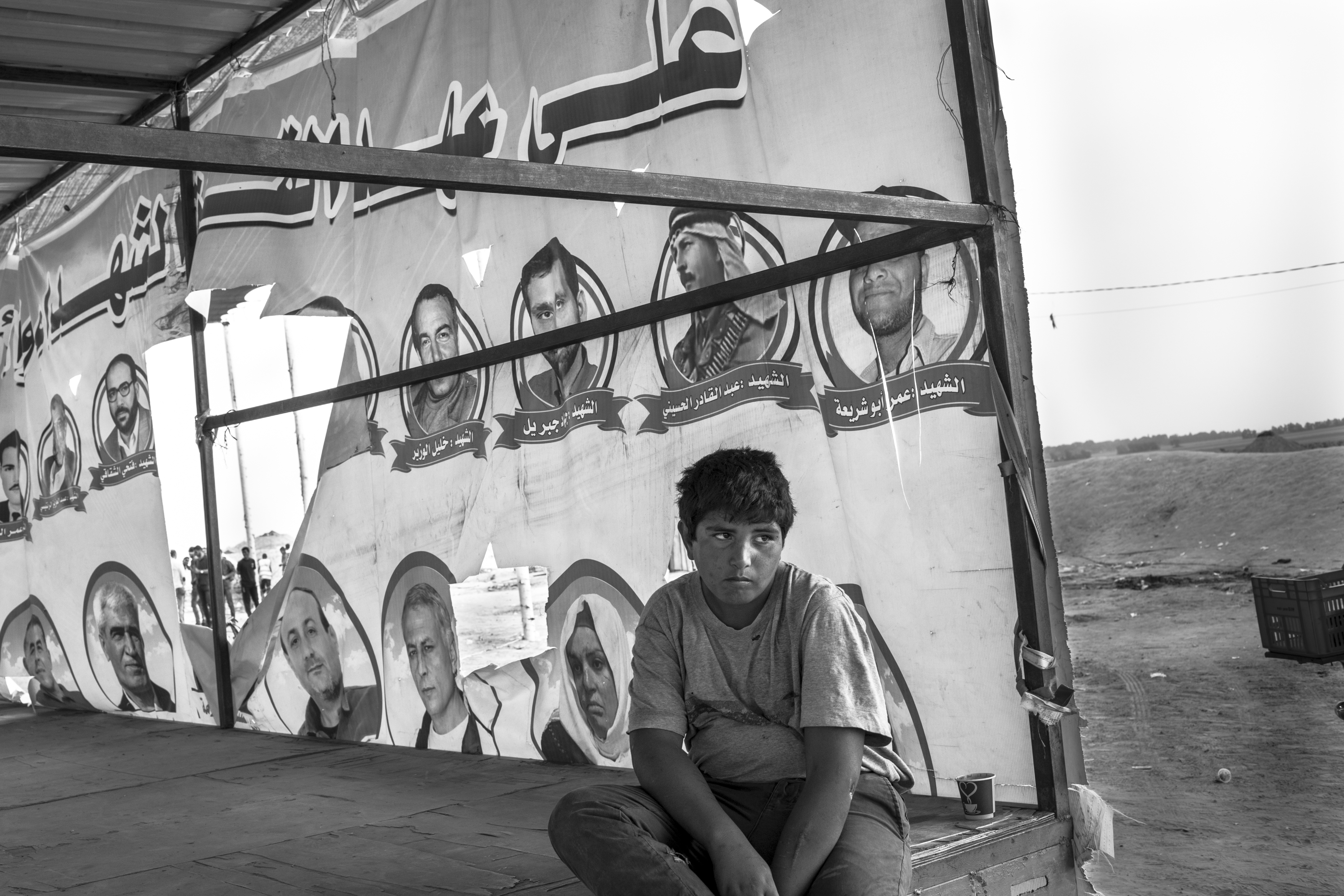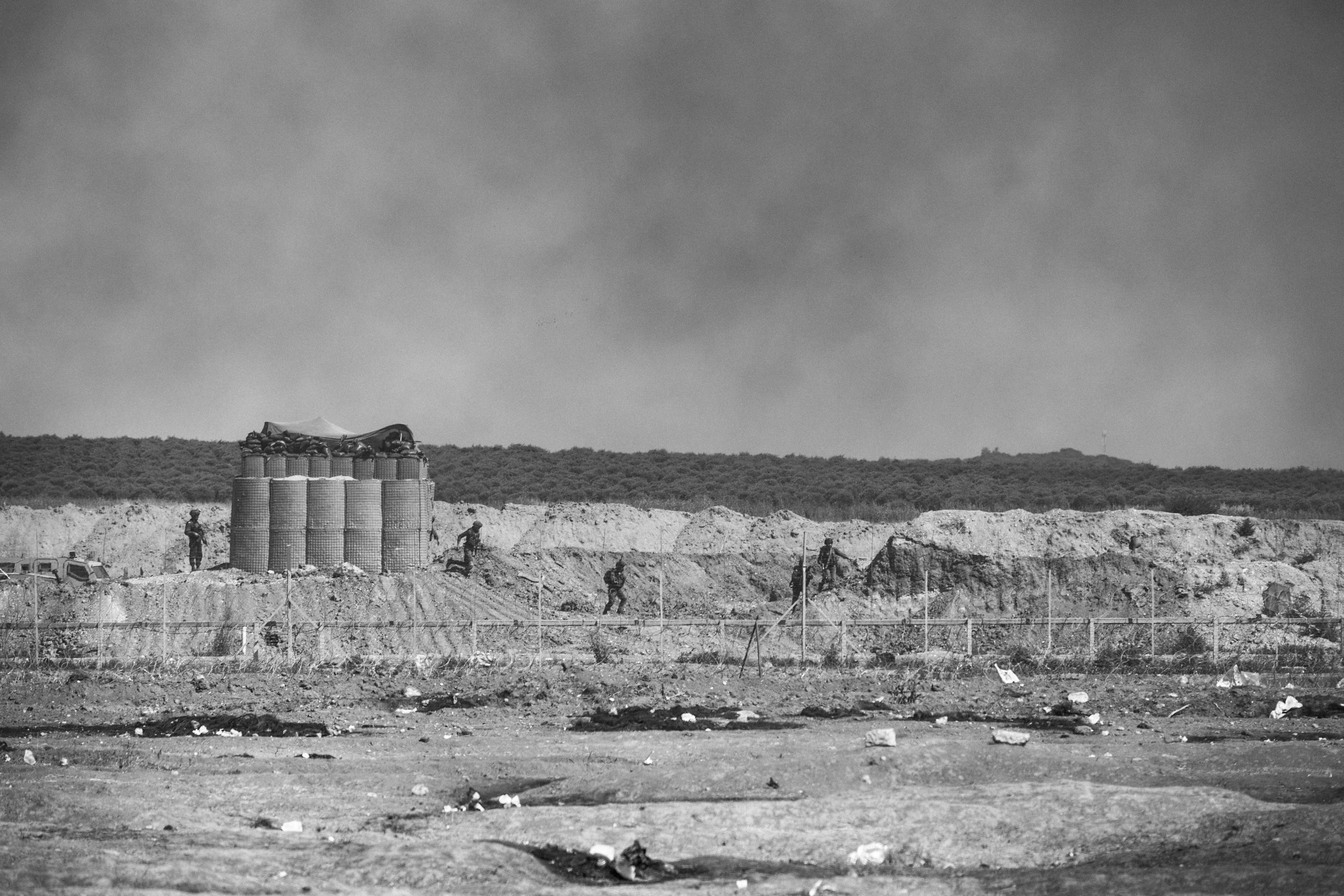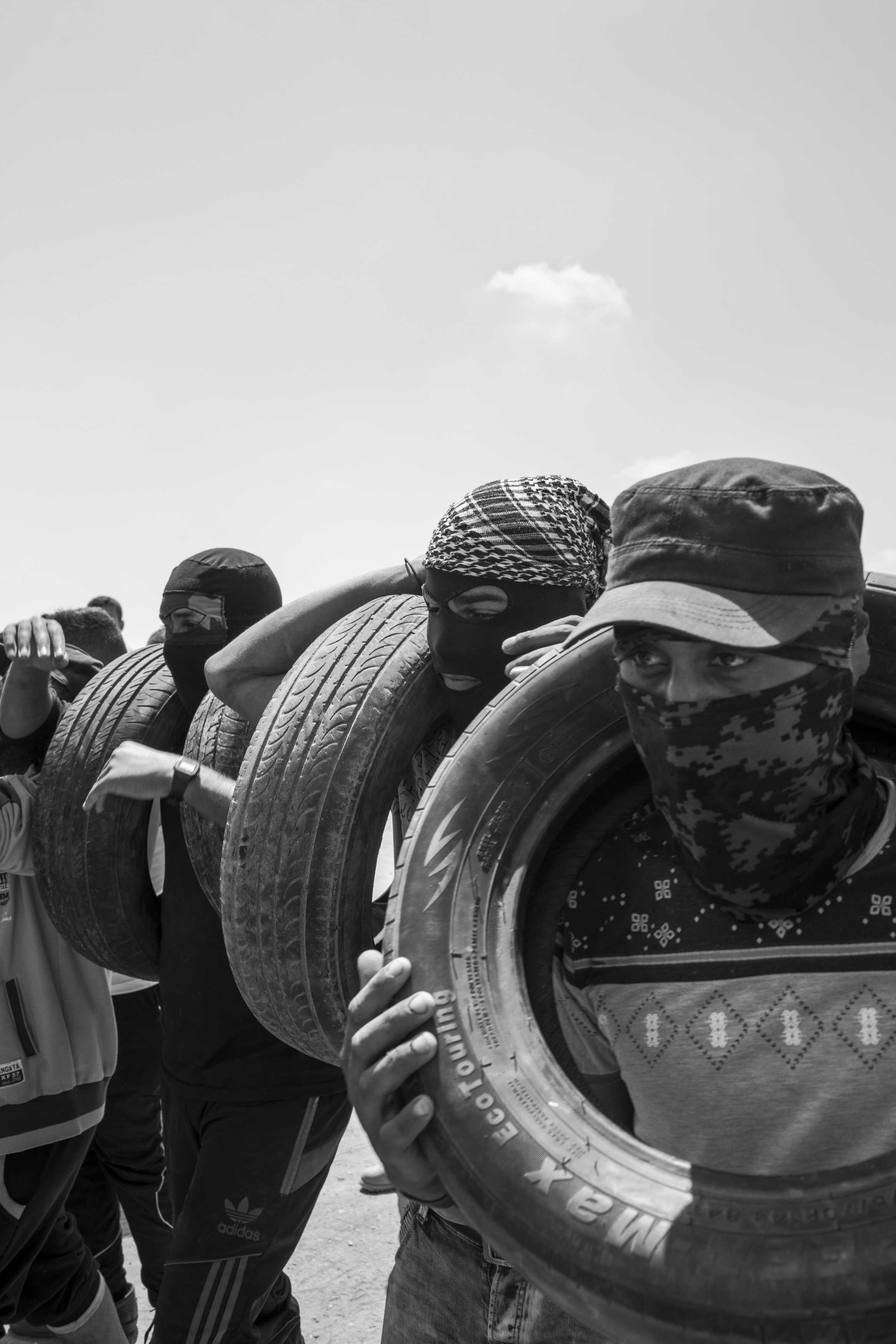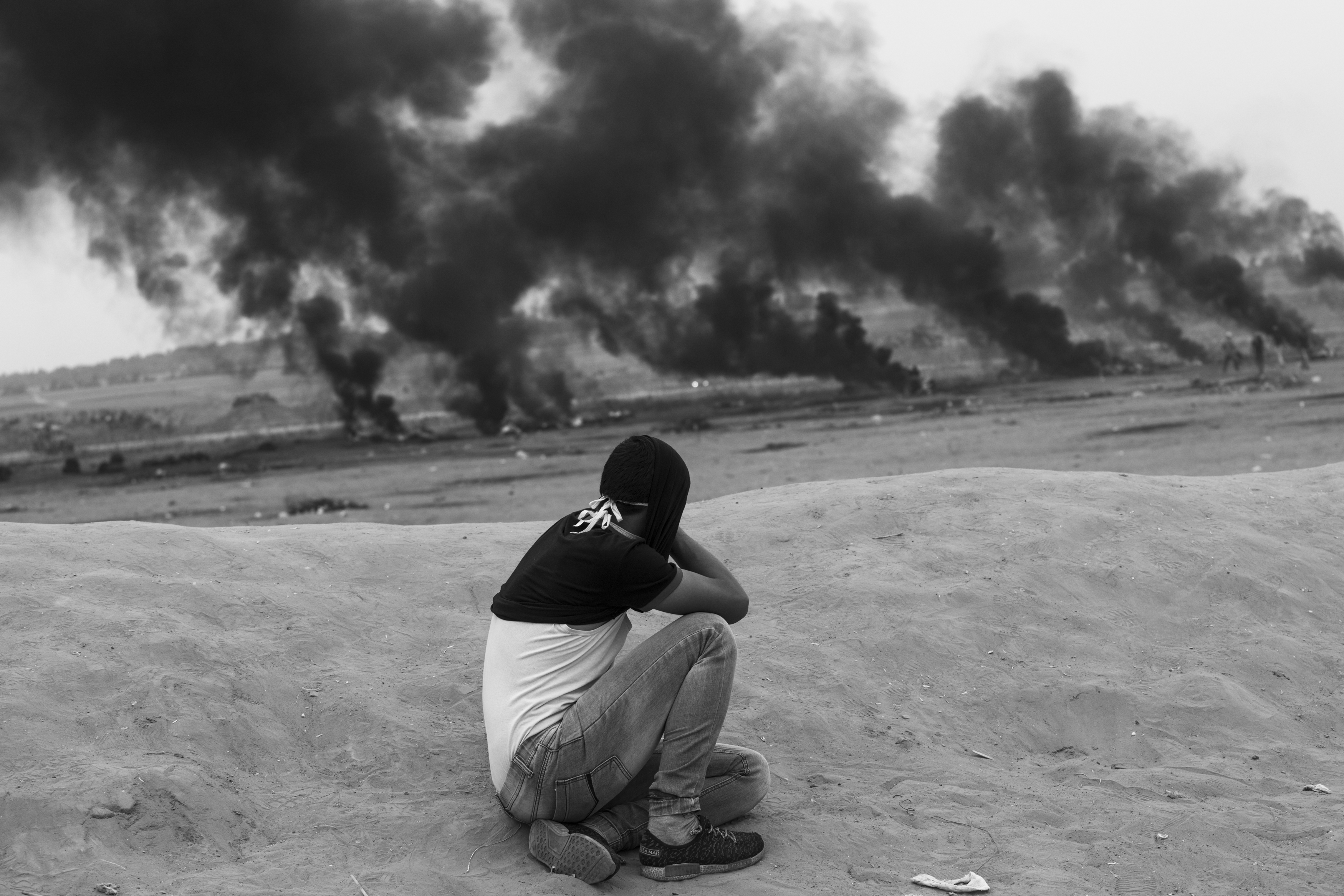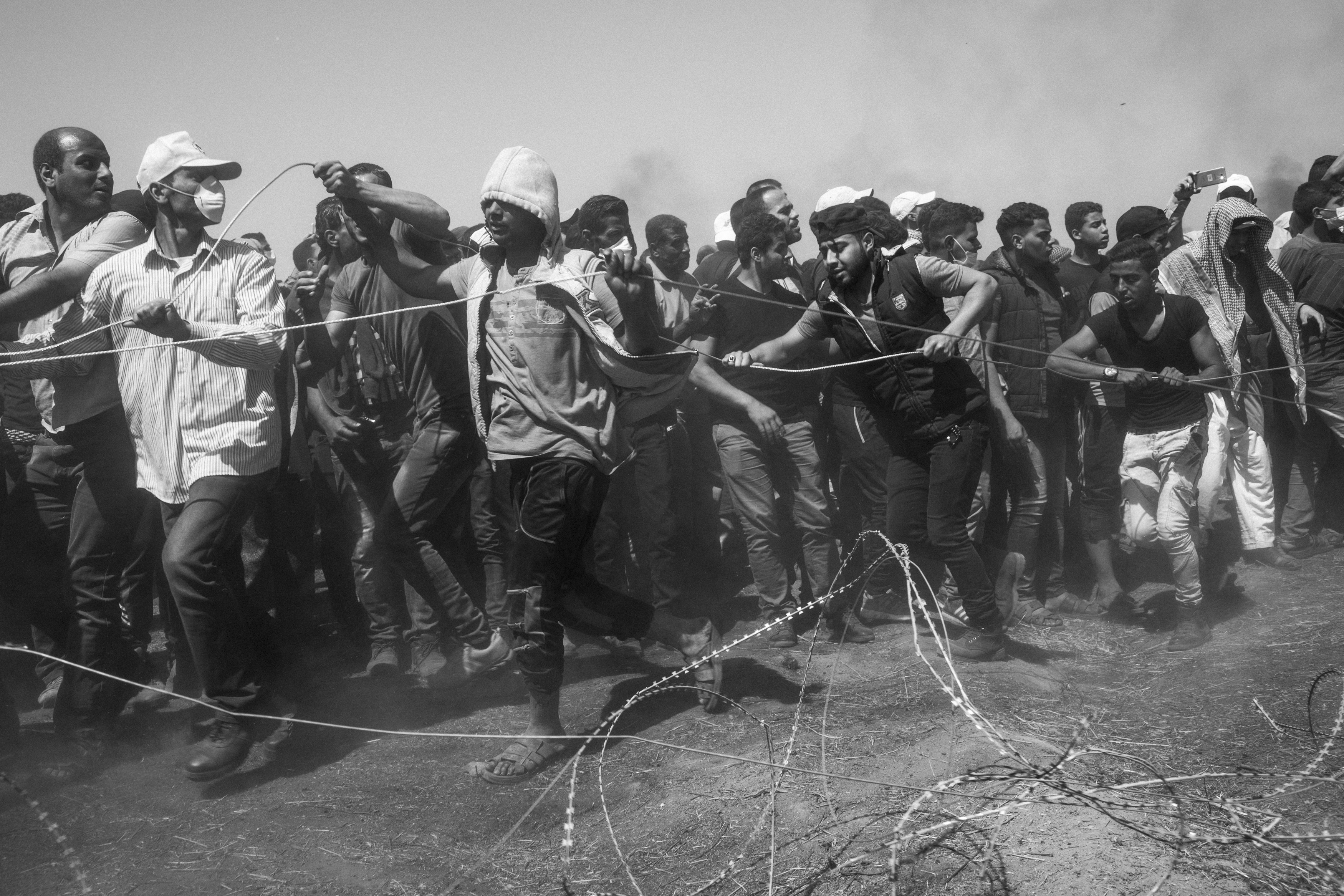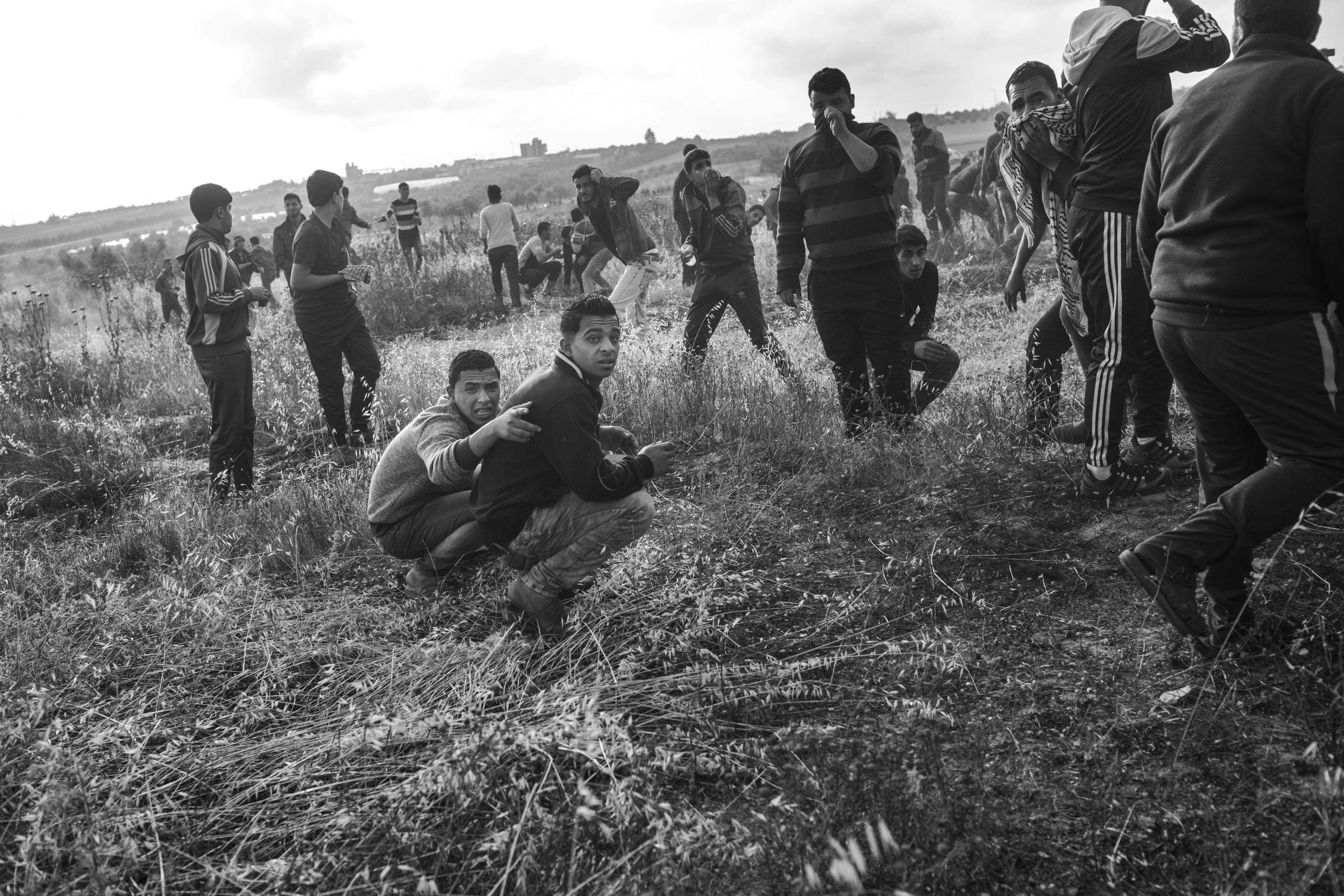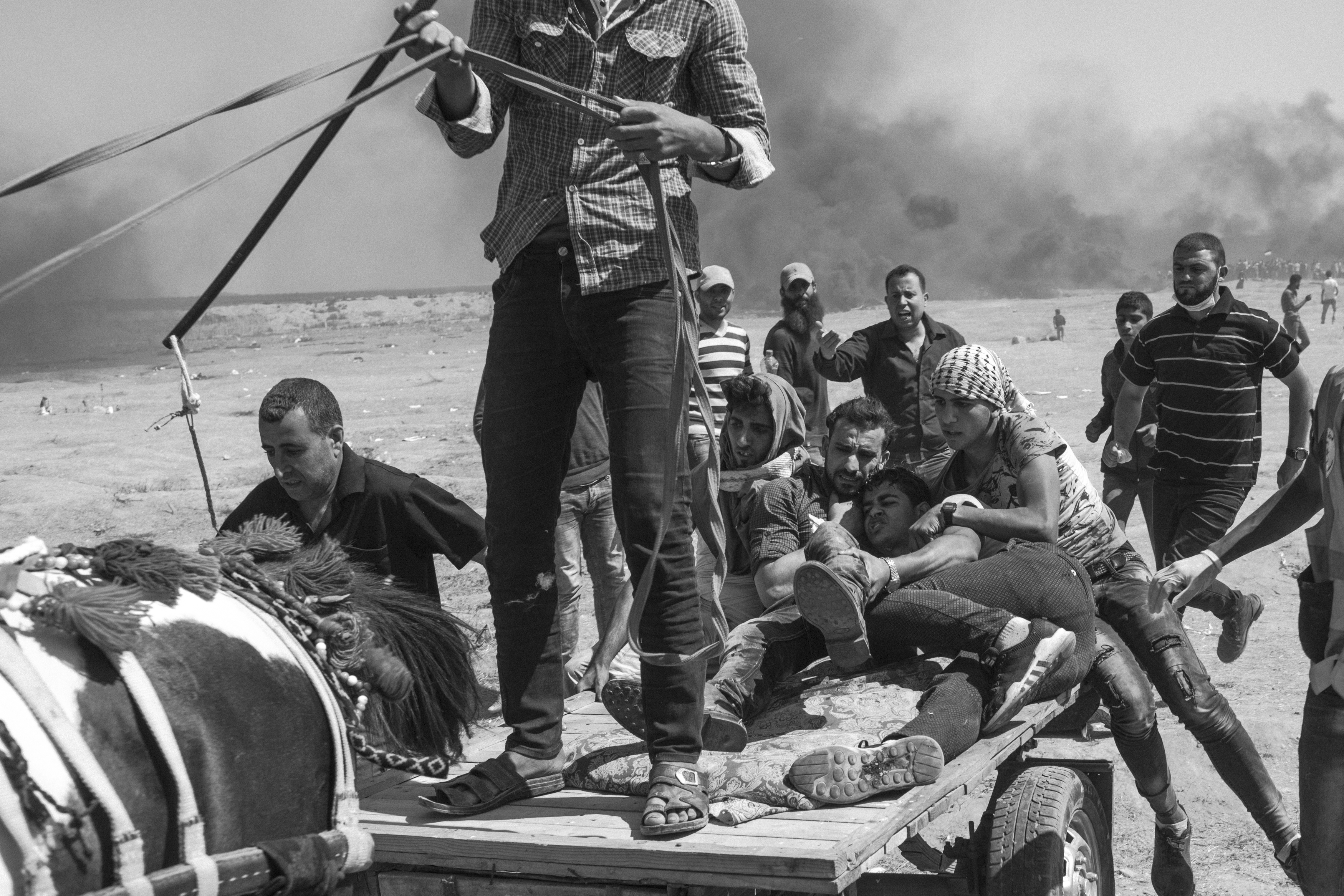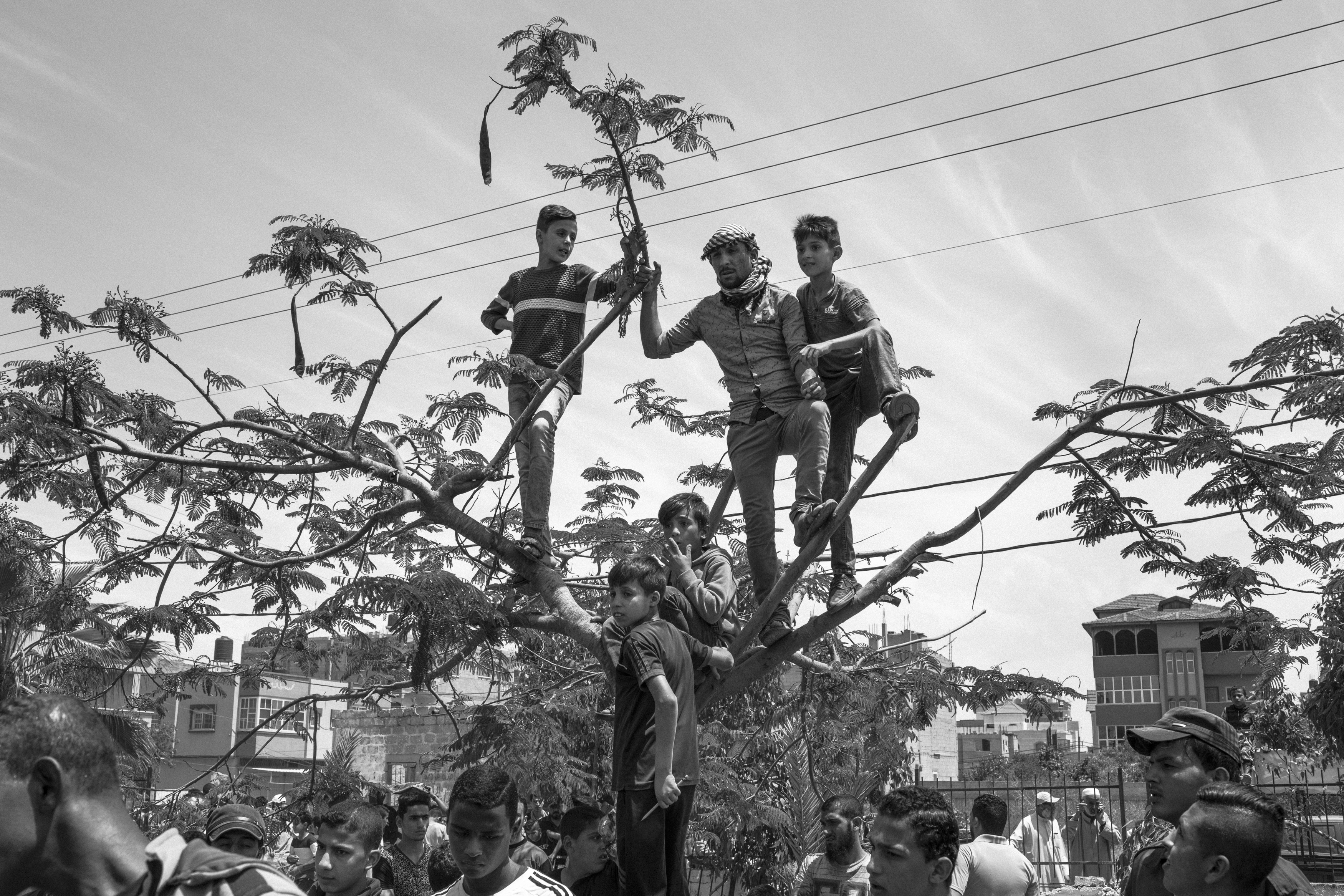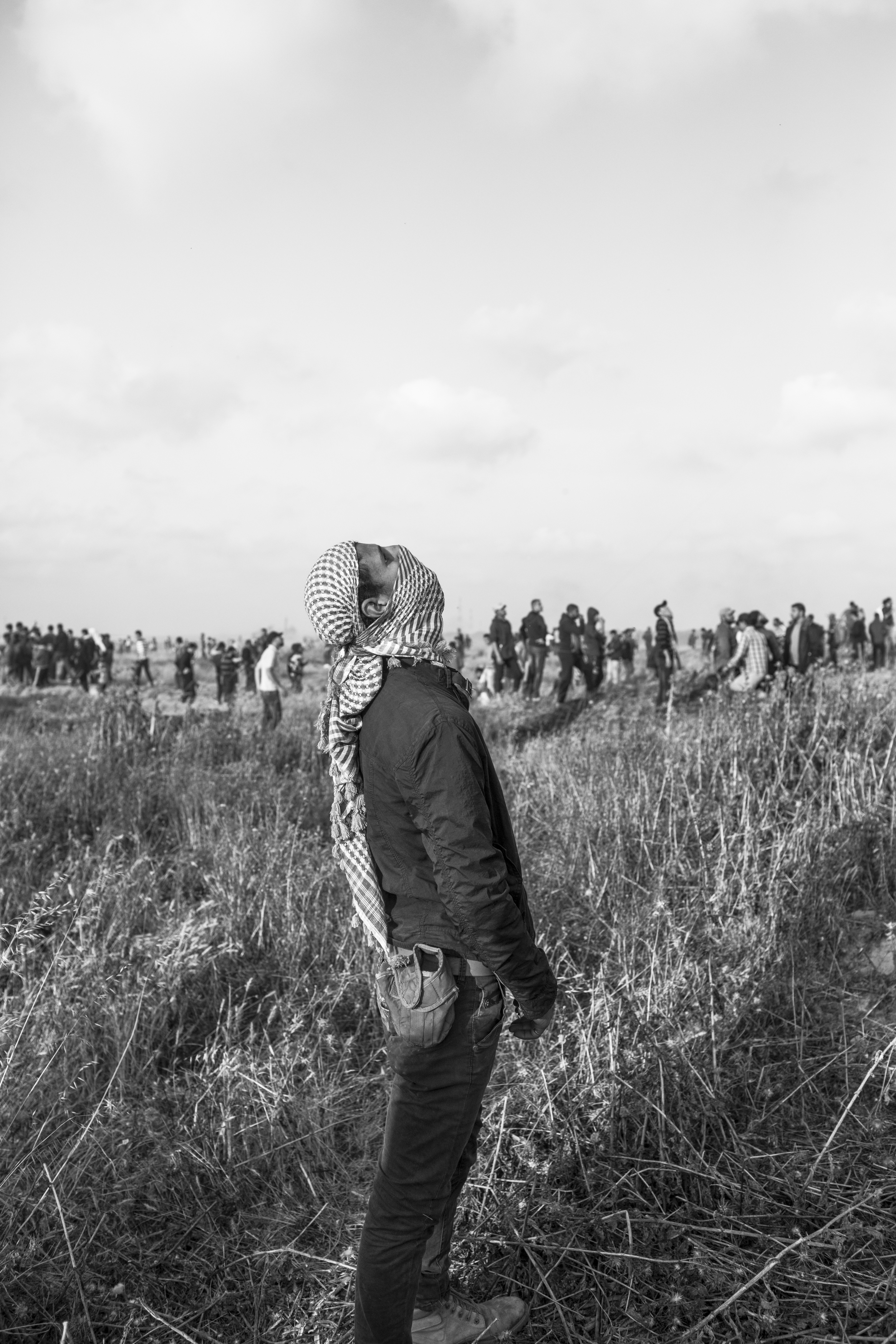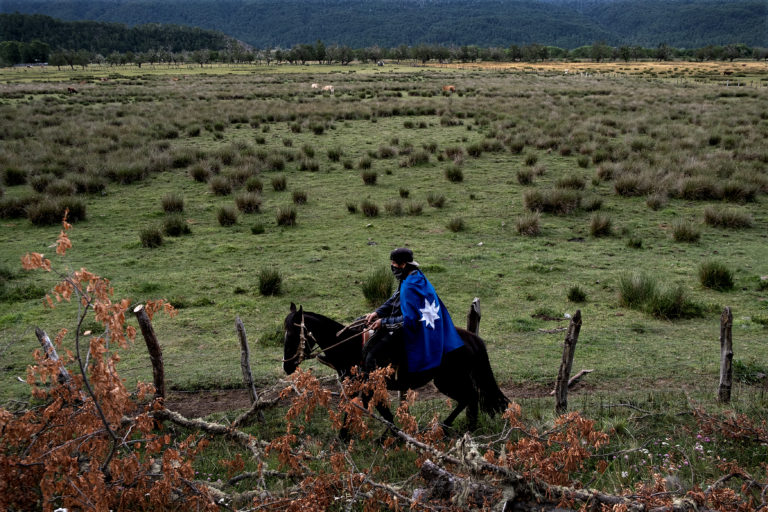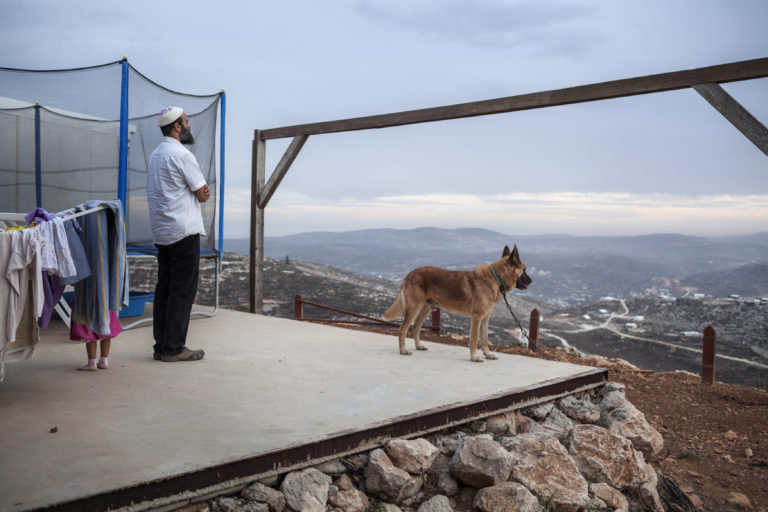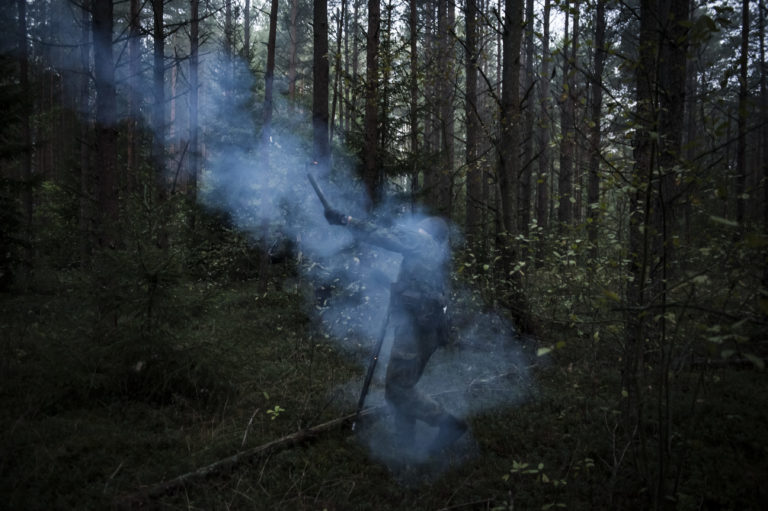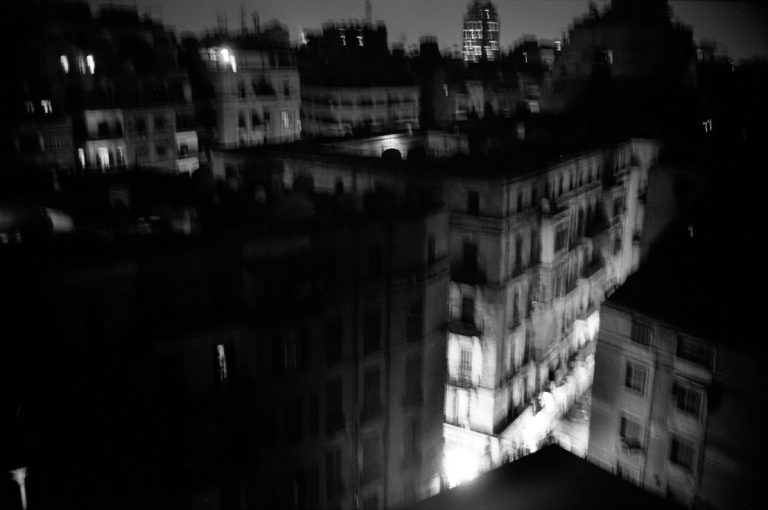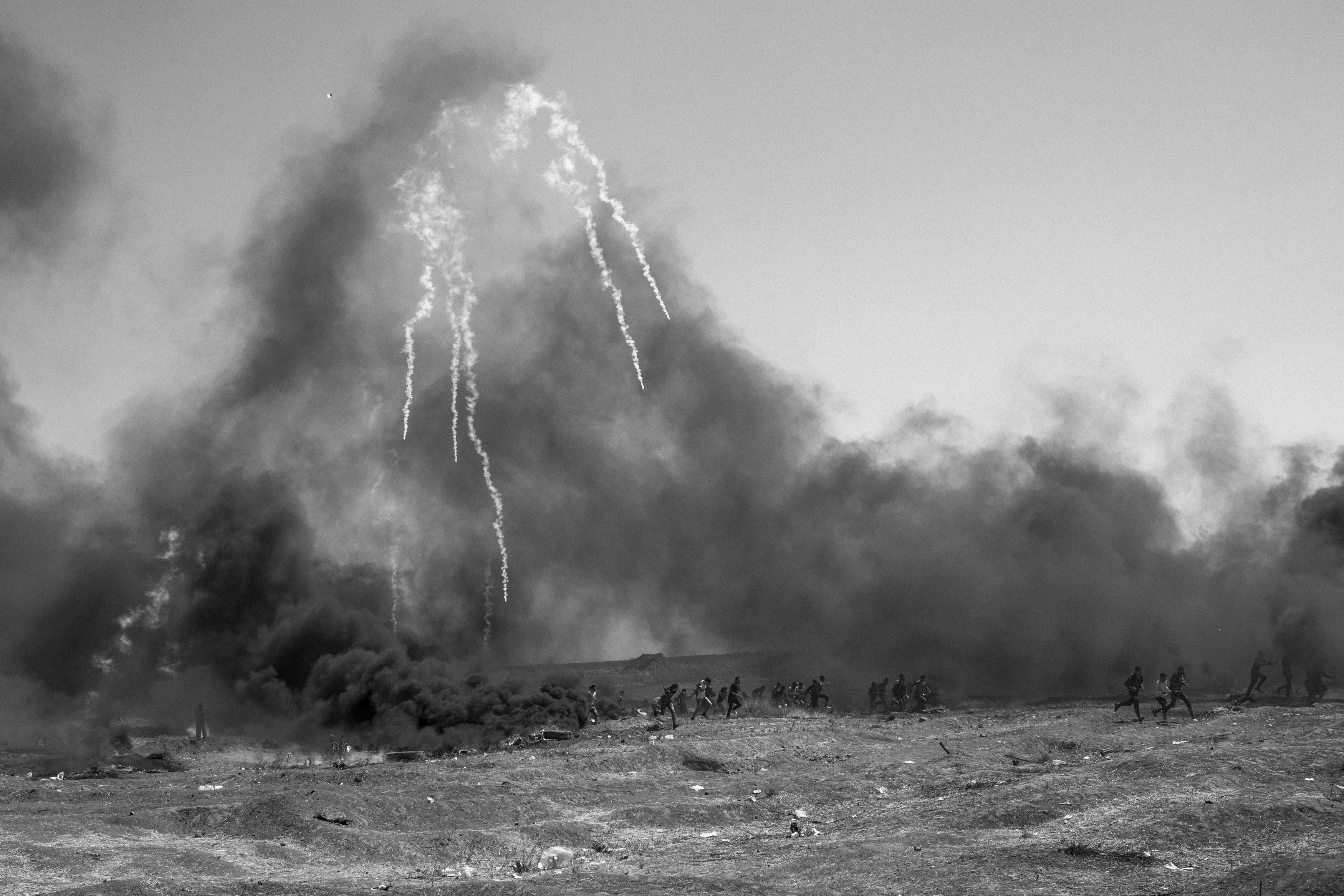
Gaza Strip, May 14, 2018. Palestinians escape from Israeli tear gas during a "Great March of Return" demonstration along the Israeli-Gaza border. The protest coincides with the controversial opening of the US embassy in Jerusalem and it is the deadliest day since The "Great March of Return" protests started on 30 March 2018.
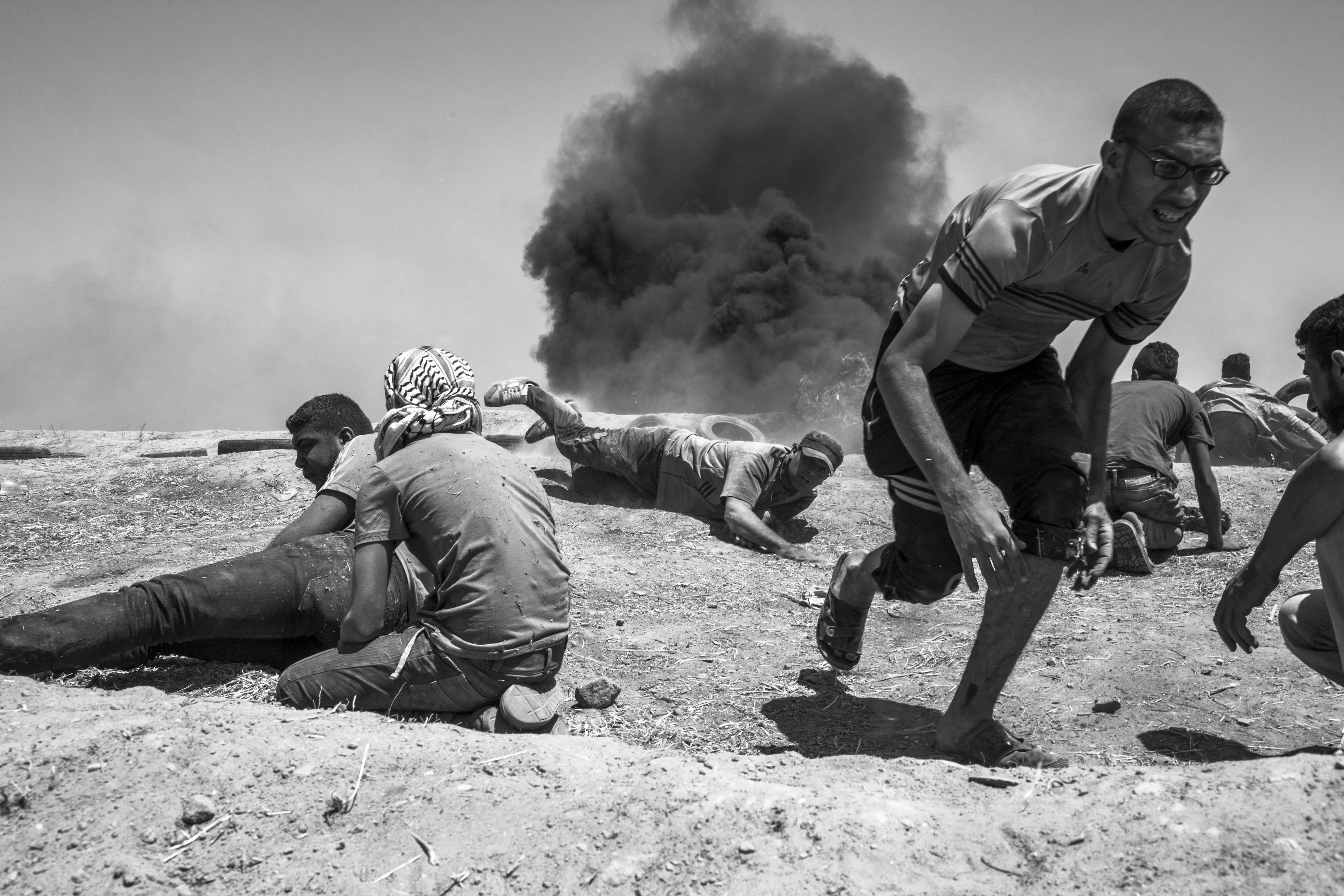
Gaza Strip, May 14, 2018. Palestinians take cover as Israeli snipers open fire during a "Great March of Return" demonstration along the Israeli-Gaza border. The protest coincides with the controversial opening of the US embassy in Jerusalem and it is the deadliest day since The "Great March of Return" protests started on 30 March 2018.
On 30 March 2018, when Palestinians commemorate the “Land Day”, thousands of protesters from the Gaza Strip gathered in different spots along the border with Israel demanding the right of the Palestinian refugees to return to the villages they were expelled from in 1948 (today in Israel) and the end of the 11-year Israeli blockade on Gaza, which has reduced the life in the Strip in dramatic conditions.
That was the first day of the so called “Great March of Return”, a series of demonstrations which were supposed to culminate on May 15, when Palestinians mark the “Nakba” (or catastrophe). But one day before, on May 14 – while USA and Israel where celebrating the opening of the controversial US embassy in Jerusalem – the protest in Gaza reached its bloodiest peak: more then 50 people killed and thousands wounded by Israeli army, mostly young boys with nothing more to lose who attempted to overcome the separation barrier symbolically.
The mass Friday demonstrations have continued since then, even if in a lower intensity, and the order for Israeli snipers is always the same: “Shoot anyone who approaches the barrier”.
